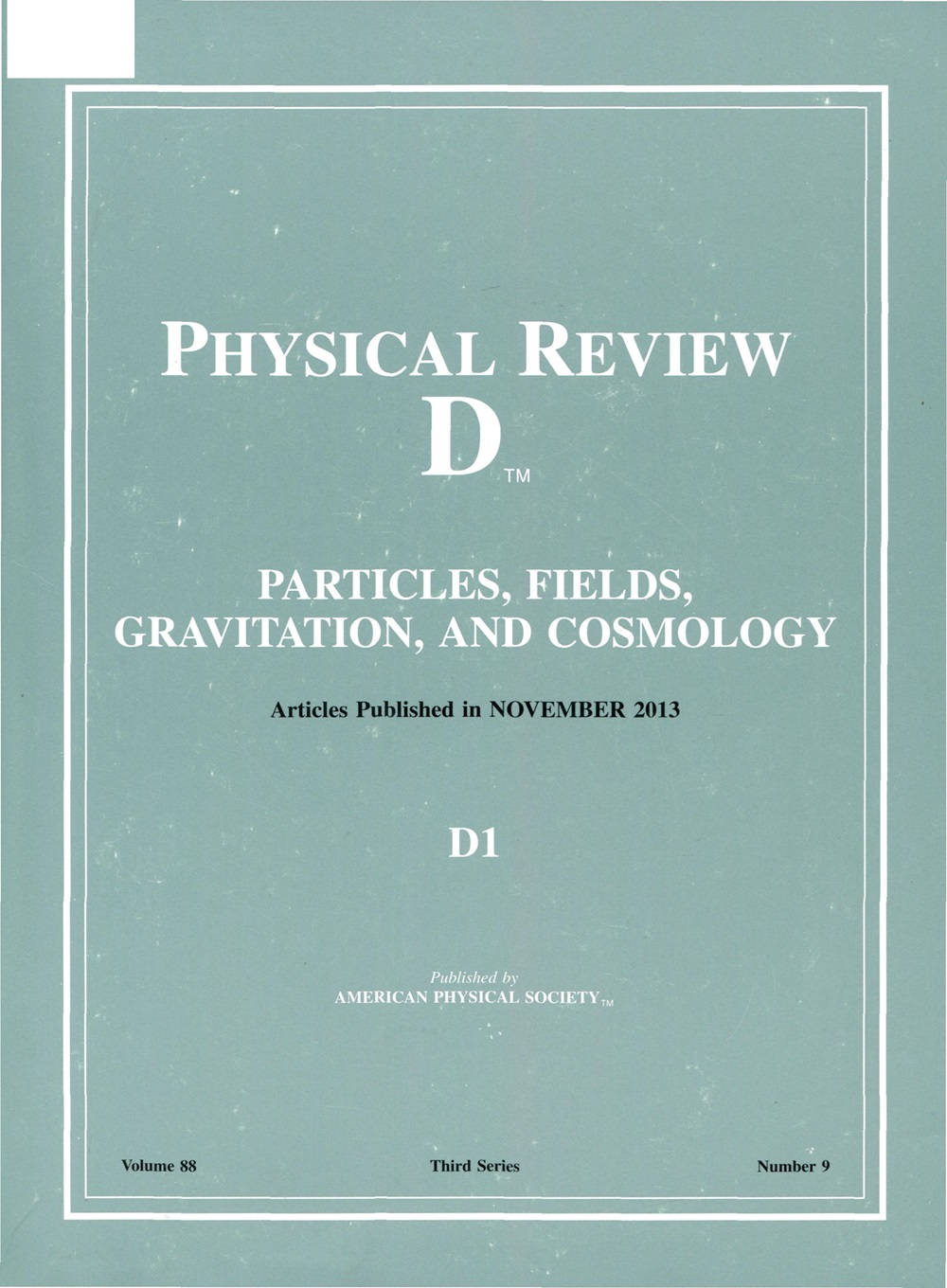Regge bootstrap: From linear to nonlinear trajectories
IF 5.3
2区 物理与天体物理
Q1 Physics and Astronomy
引用次数: 0
Abstract
We present a numerical linear programming bootstrap to construct dual model scattering amplitudes. Dual models describe tree-level exchanges of higher spin resonances in theories like string theory and large N gauge theories. Despite being very simple objects, their numerical bootstrap has proven challenging due to slow convergence of the infinite sums over resonances. Our bootstrap succeeds thanks to an efficient parametrization of the amplitude in terms of Mandelstam-Regge poles and the use of combined regions that make crossing symmetry constraining. Along the way, we discover and conjecture a property of “superunitarity” of the Veneziano amplitude, which we use to keep a linear problem. As results, we present first the study of a class of stringlike amplitudes with linear trajectories, for which we observe that the Veneziano amplitude lies at a preferred location, at the bottom of a pit, which minimizes crossing. Then, we introduce a toy-model deformation to nonlinear trajectories, mimicking some features of QCD, for which our algorithm also detects a clear pit. This gives compelling evidence that our bootstrap is able to produce amplitudes that can exhibit nontrivial phenomenological features.Regge自举:从线性轨迹到非线性轨迹
我们提出了一种数值线性规划自举法来构造对偶模型散射振幅。对偶模型描述了弦理论和大N规范理论中较高自旋共振的树级交换。尽管是非常简单的对象,但由于共振上无限和的缓慢收敛,它们的数值自举已被证明具有挑战性。我们的自举成功得益于曼德尔斯塔姆-雷格极点对振幅的有效参数化,以及使用使交叉对称约束的组合区域。在此过程中,我们发现并推测了Veneziano振幅的“超酉性”,我们用它来保持一个线性问题。作为结果,我们首先提出了一类具有线性轨迹的弦状振幅的研究,我们观察到Veneziano振幅位于一个优选位置,在一个坑的底部,它最小化交叉。然后,我们引入了一个玩具模型的非线性轨迹变形,模拟了QCD的一些特征,我们的算法也检测了一个清晰的坑。这提供了令人信服的证据,表明我们的自举能够产生能够表现出非平凡现象学特征的振幅。2025年由美国物理学会出版
本文章由计算机程序翻译,如有差异,请以英文原文为准。
求助全文
约1分钟内获得全文
求助全文
来源期刊

Physical Review D
物理-天文与天体物理
CiteScore
9.20
自引率
36.00%
发文量
0
审稿时长
2 months
期刊介绍:
Physical Review D (PRD) is a leading journal in elementary particle physics, field theory, gravitation, and cosmology and is one of the top-cited journals in high-energy physics.
PRD covers experimental and theoretical results in all aspects of particle physics, field theory, gravitation and cosmology, including:
Particle physics experiments,
Electroweak interactions,
Strong interactions,
Lattice field theories, lattice QCD,
Beyond the standard model physics,
Phenomenological aspects of field theory, general methods,
Gravity, cosmology, cosmic rays,
Astrophysics and astroparticle physics,
General relativity,
Formal aspects of field theory, field theory in curved space,
String theory, quantum gravity, gauge/gravity duality.
 求助内容:
求助内容: 应助结果提醒方式:
应助结果提醒方式:


